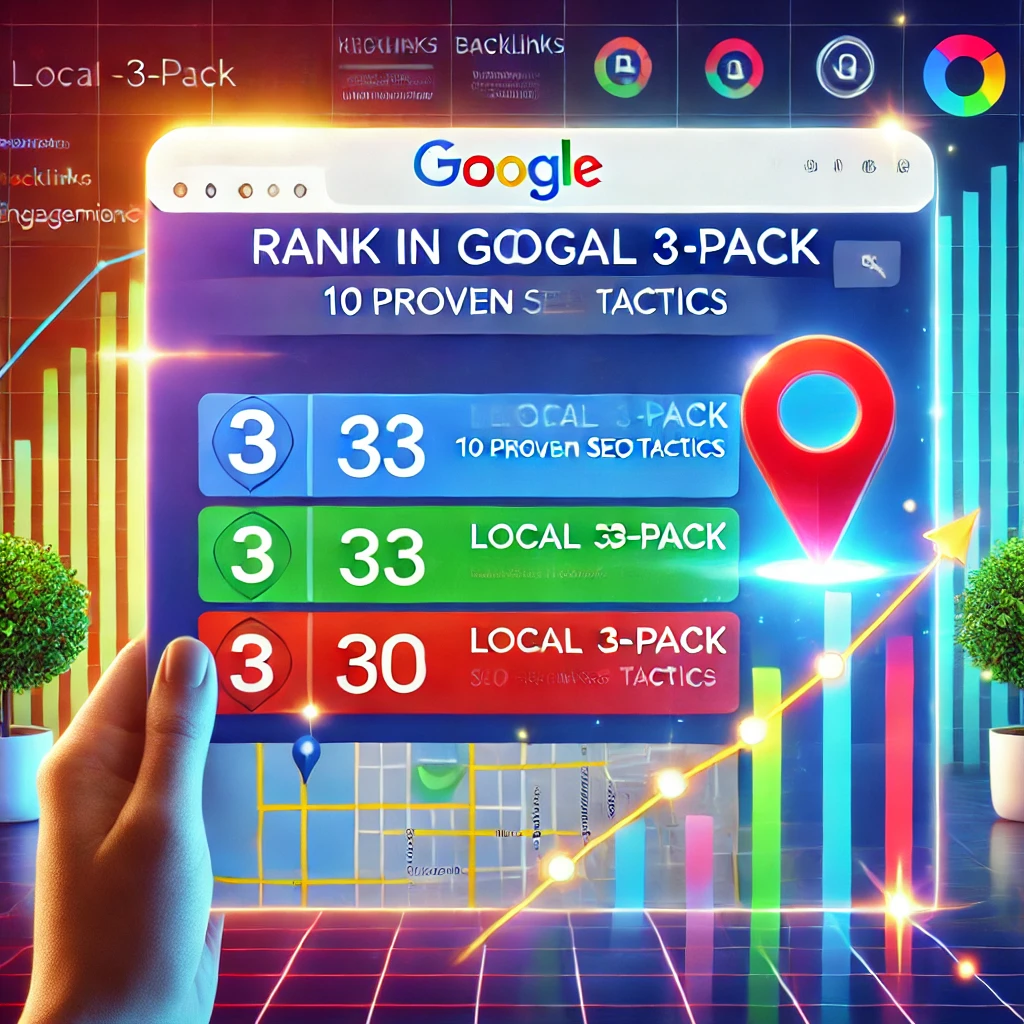
Introduction: Why Your Business Isn’t in the Local 3-Pack Yet
Ever wondered why some businesses always appear in Google’s Local 3-Pack while yours struggles to break into the top results? The truth is, SEO agencies guard their best strategies, keeping you in the dark.
Today, we’re pulling back the curtain. In this ultimate guide, you’ll discover 10 advanced Local SEO strategies that agencies don’t want you to know. Implement these and watch your business dominate local search rankings.
Key Takeaways
- Google’s Local 3-Pack is prime real estate for local businesses.
- Ranking factors include relevance, proximity, and prominence—but there’s more to it than that.
- Google Business Profile (GBP) optimization is non-negotiable.
- Reviews, citations, and behavioral signals play a crucial role.
- Most agencies won’t tell you these strategies—but we will!
What is Google’s Local 3-Pack?
Google’s Local 3-Pack showcases the top three businesses in a specific area for a given search query. For example, searching for “best pizza near me” returns three businesses in a map-based box.
Businesses in this box get higher visibility, more clicks, and more customers. But how do you land a spot there? Let’s break it down.
The 10 Secrets to Dominating Google’s Local 3-Pack
1. Fully Optimize Your Google Business Profile (GBP)
Your Google Business Profile (formerly Google My Business) is the foundation of Local SEO. A fully optimized GBP helps Google understand your business and rank it higher.
Steps to Optimize Your GBP:
- Complete all sections: Business name, address, phone number (NAP), website, and hours.
- Upload high-quality photos & videos to showcase your business.
- Post weekly updates with Google Posts to keep your profile fresh.
- Select the right business categories to match user searches.
- Craft a keyword-rich but natural business description.
- Enable messaging and respond to inquiries quickly.
Pro Tip: A fully completed profile increases your chances of ranking in the Local 3-Pack by up to 70%!
2. Get More (and Better) Customer Reviews
Google prioritizes businesses with frequent, high-quality reviews. The more detailed and keyword-rich reviews you have, the higher your rankings.
How to Get More Reviews (Without Violating Google Guidelines):
- Ask satisfied customers immediately after a purchase/service.
- Send review request emails or SMS with a direct GBP link.
- Respond to every review (especially negative ones) to show engagement.
- Encourage customers to mention specific products/services in their reviews.
Example: Bad Review: “Great pizza!” Optimized Review: “The pepperoni pizza at Tony’s Pizzeria is the best I’ve ever had! Crispy crust, gooey cheese, and just the right amount of spice. The staff was friendly, and service was super fast!”
Pro Tip: Google reads reviews like content. The more relevant keywords, the better your rankings.
3. Ensure Local Citations & NAP Consistency
A local citation is any online mention of your business, including directories like Yelp, BBB, and Apple Maps.
Why Citations Matter:
- Google cross-checks NAP consistency across different sites.
- Inconsistent business details confuse Google and lower your rankings.
- High-authority directory listings improve local credibility.
How to Fix NAP Issues:
- Scan for errors using Moz Local or BrightLocal.
- Ensure consistency on all listings (Google, Yelp, Bing Places, etc.).
- Update incorrect or duplicate listings ASAP.
4. Build High-Quality Local Backlinks
Most agencies focus on generic backlinks, but local businesses need local backlinks.
Best Ways to Get Local Backlinks:
- Sponsor local events and get listed on their websites.
- Join local business groups (Chamber of Commerce, networking groups).
- Collaborate with local bloggers & news sites for features.
- Get listed in high-authority local directories.
Pro Tip: A local backlink from a trusted city website carries more weight than one from an irrelevant blog.
5. Create Geo-Targeted Content & Location Pages
Content isn’t just for blogs; it’s a Local SEO powerhouse.
Example Strategy:
🚫 Bad: A single page listing multiple service areas. ✅ Good: Separate location-specific pages like:
- “Best Plumber in Dallas”
- “24/7 Plumbing Services in Houston”
- “Top-Rated Emergency Plumber in Austin”
Each page should:
- Include local keywords.
- Feature local testimonials and case studies.
- Embed Google Maps for credibility.
6. Leverage Behavioral Signals to Improve Rankings
Google tracks user behavior on search results to rank businesses.
Ways to Boost Engagement:
- Add Google Q&A with frequently asked questions.
- Improve website speed & mobile-friendliness.
- Use real customer photos (instead of stock images).
- Place Call Now & Get Directions buttons prominently.
Pro Tip: The longer users stay on your page, the higher your rankings!
7. Embed Google Maps on Your Website
Embedding Google Maps strengthens your local authority.
Steps to Embed:
- Go to Google Maps, search for your business.
- Click “Share”, select “Embed map”.
- Copy and paste the code onto your Contact Us page.
8. Use Schema Markup for Local SEO
Schema markup helps Google understand your business.
Steps to Add Local Schema:
- Use JSON-LD schema for business details.
- Include opening hours, service areas, and reviews.
- Generate schema using Google’s Structured Data Tool.
9. Run Local PPC Ads for Instant Visibility
While SEO takes time, Google Ads can get you instant visibility.
Tips for Local PPC Success:
- Target ads based on location radius.
- Use location extensions in Google Ads.
- Focus on high-intent keywords (e.g., “near me” searches).
10. Monitor & Adapt Using Google Insights
Regular tracking helps you fine-tune your strategy.
Key Metrics to Watch:
- Profile views & search queries in GBP Insights.
- User actions (calls, website visits, direction requests).
- Ranking improvements using tools like BrightLocal.
Final Thoughts: Take Action Now!
Now that you know the 10 secrets to ranking in Google’s Local 3-Pack, it’s time to take action!
Want expert help? Check out our Local SEO services and let’s get you to the top!
Learn about Digital Marketing: Why a Newly Established Business Needs It